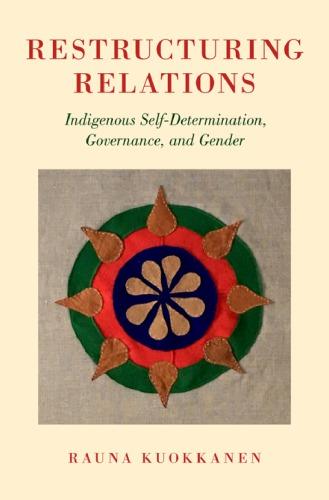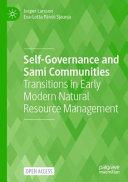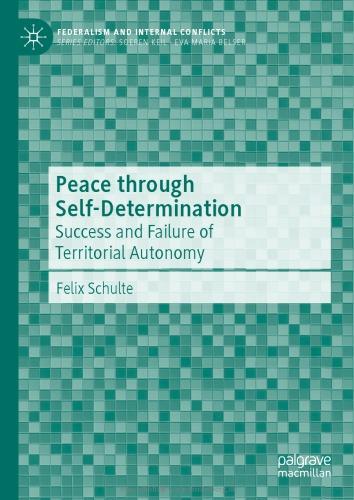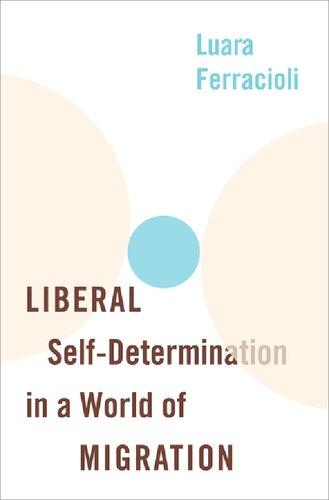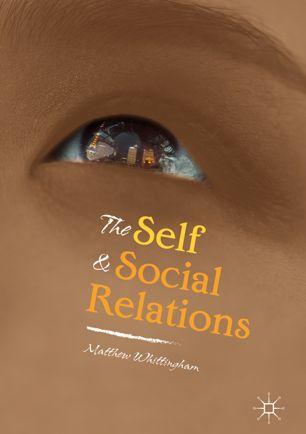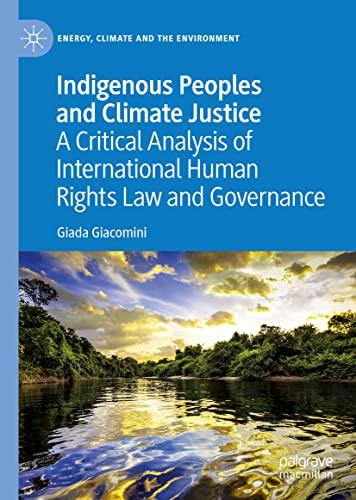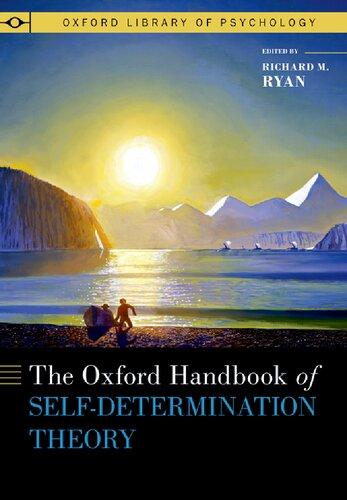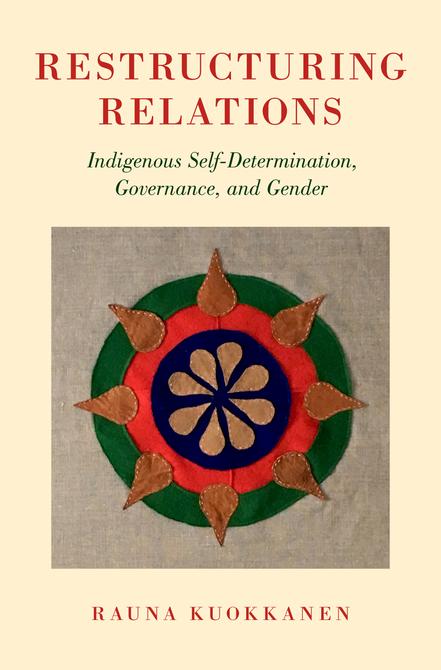1
Oxford University Press is a department of the University of Oxford. It furthers the University’s objective of excellence in research, scholarship, and education by publishing worldwide. Oxford is a registered trade mark of Oxford University Press in the UK and certain other countries.
Published in the United States of America by Oxford University Press 198 Madison Avenue, New York, NY 10016, United States of America.
© Oxford University Press 2019
All rights reserved. No part of this publication may be reproduced, stored in a retrieval system, or transmitted, in any form or by any means, without the prior permission in writing of Oxford University Press, or as expressly permitted by law, by license, or under terms agreed with the appropriate reproduction rights organization. Inquiries concerning reproduction outside the scope of the above should be sent to the Rights Department, Oxford University Press, at the address above.
You must not circulate this work in any other form and you must impose this same condition on any acquirer.
CIP data is on file at the Library of Congress ISBN 978–0–19–091328–1
9 8 7 6 5 4 3 2 1
Printed by Sheridan Books, Inc., United States of America
for Elias and Matias and all future generations of Indigenous children
Contents Acknowledgments ix
Introduction: Indigenous Feminist Examination of Self-determination 1
1. Self-Determination: Foundational Value 22
2. Indigenous Self-Government Structures in Canada, Greenland, and Sápmi 60
3. Implementing Indigenous Self-Determination: Self-Administration, Rematriation, or Independence? 97
4. Gendering Indigenous Self-Government 138
5. Self-Determination and Violence against Indigenous Women 179
6. Indigenous Gender Justice as Restructuring Relations 217
Notes 237
Bibliography 307
Index 353
Acknowledgments
I am deeply grateful to all who have supported me through the process that has made this book possible. These people include colleagues, family, friends, and the research participants and research assistants whom I acknowledge below. There are also general and material factors that have enabled this book. One of the general factors is the emergence and growth of sustained and strong Indigenous feminist theory and practice in the past decade. This book would have not been possible without the critical interventions of Indigenous feminist scholarship and activism not only in research, but also Indigenous and mainstream societies. Whereas today we can say that Indigenous feminism exists without apology, it was not the case when I was drafting my research proposal that became this book and submitted my grant application in 2009 (although to my great surprise, I received an SSHRC Standard Research Grant the first time I applied).
I am grateful to the Social Sciences and Humanities Research Council for this financial support, which enabled me to do the fieldwork for this book and employ excellent research assistants to help collect and transcribe the research material. I am particularly grateful to Sam Grey for her extensive and invaluable research assistance, which included identifying research participants and conducting interviews in the Lower Mainland and on Victoria Island (British Columbia). She also continuously flagged and provided me with relevant literature and other sources. I also thank my other research assistants: Tuuli Miettunen, who provided help with transcribing interviews conducted in the Sámi language and doing extensive newspaper searches in Finland; Astrid Hägerdal, who helped with transcribing interviews conducted in Swedish and translating certain expressions into English; and mahsi cho to Kristen Yakeleya, who assisted me in organizing and coordinating research and youth meetings and in contacting research participants in Tulít’a, Northwest Territories.
Acknowledgments
I want to acknowledge and thank all the research participants who trusted and had faith in me and my abilities to carry out this project. I want to thank particularly those participants who saw the importance of my research project and shared that with me. In the darkest moments of writing the book, it was that support and encouragement and the responsibility the research participants had bestowed me that reminded me of the importance of completing it. At times, I felt the responsibility weighing heavy on my shoulders while at the same time, pushing me forward and preventing me from giving up. Special thanks and mahsi cho goes to everyone in Tulít’a who welcomed me and my family to their community for such an unforgettable stay by the mighty Mackenzie River in the summer of 2014.
I am deeply saddened for the unexpected passing of one of the research participants and my dear friend, Henriette Rasmussen, in 2017 during the last stages of writing this book. Henriette’s warm spirit, support, and sharp insight provided me invaluable guidance both before and during my stay in Nuuk, Greenland. Henriette welcomed me and my family into her home and family for which I say qujanaq, ollu giitu, thank you. I also thank Henriette’s family, with whom we spent a lovely Easter in 2013 in Nuuk. It saddens me that Henriette was not able to see this book in its final form.
I thank Angela Chnapko at Oxford University Press for her interest and encouragement from the start. Her support and advice kept me on track when I needed it most.
I am grateful to friends and colleagues for having taken the time to give me comments on drafts or talk with me about the project. I would particularly like to thank Joyce Green, Jennifer Nedelsky, Joseph Carens, Val Napoleon, Mary Eberts, Makere StewartHarawira, John Bernard Henriksen, Ulf Mörkenstam, Matt James, Melissa Williams, Gudrun Eriksen Lindi, and other members of the Sámi Women’s Forum, especially the participants of the 2015 gathering in Ubmeje/Umeå, Sweden.
I express my special gratitude to Deborah Simmons for her thoughtful and extensive engagement with my work. Deb’s generous support and help made my work possible in Tulít’a, and her kind yet always sharp and grounded feedback sharpened my thinking on several occasions. Not least, Deb’s continuous insistence on making my writing and thinking more accessible to a broader audience was an invaluable learning experience for me. She also helped me organize a number of community meetings and gatherings in Tulít’a, including a workshop in May 2017 when I was able to return to Tulít’a to share my research findings with community members. Deb helped to plan and facilitate the very successful workshop we called “Strong People, Strong Communities.”
My biggest thanks and deepest gratitude is to my family, whose endless support, patience, and understanding have made my work and this book possible. Giitos eatnat to my mother Kirste for her teachings, support, and stories that sustain our family in numerous ways. She’s also a role model for having written way more books than I ever will. Giitos eatnat to my sons Elias and Matias for their beautiful presence and joie de vivre that balances my life in ways that nothing else can. I remain most grateful of all to my partner Philip, whose enduring and everlasting good spirit, love, and support in countless ways
Acknowledgments xi enabled me to do this work. You made things work out when I was about to despair and were always up for a trip with infants and small children in tow, no matter how remote a location. Without you this book simply would have not been possible, starting from the pre-kids brainstorming session in a rainy Toronto parking lot waiting for a ride in 2009. What a journey it has been!
Restructuring Relations
Why is it so difficult to write and speak as an Indigenous woman, explicitly from an Indigenous woman’s experience, about the broader political issues of self-determination, Indigenous legal orders and law, self-government, or aboriginal rights?1
Van Napoleon
Introduction
INDIGENOUS FEMINIST EXAMINATION OF SELF- DETERMINATION
This book seeks to answer the question posed by Val Napoleon, Cree feminist legal scholar, by doing three things: conceptualizing Indigenous self-determination as a foundational value that seeks to restructure all relations of domination; examining gender regimes of Indigenous self-government institutions; and interrogating the relationship between Indigenous self-determination and gender violence, specifically violence against Indigenous women. It is my contention that in order to answer Napoleon’s question, we need to examine the broader political issues of self-determination, Indigenous legal orders and law, self-government, and Indigenous rights specifically through the lens of gendered violence at various levels, ranging from the structures of the state to interpersonal physical and sexual violence.
Drawing on my fieldwork with mostly Indigenous women in Canada, Greenland, and Sápmi,2 I argue that the difficulty for Indigenous women to speak and write about these issues arises from the fact that despite their long and active involvement and participation in multiple ways, their views have been systematically brushed aside in formulating Indigenous self-determination and self-government discourses that have been formalized in international law and national legislation in the past couple of decades. Yet we need to acknowledge that adding and stirring will not change much. Inserting Indigenous women’s views into these discourses will not transform the discourses to reflect or represent what self-determination and self-government mean for these women. What is required, rather, is an Indigenous feminist examination of self-determination. This book critically interrogates normative notions and predominant discourses of Indigenous self-determination, the structures of Indigenous self-government institutions,
and their ability to address violence, especially violence against Indigenous women. Drawing particularly on Indigenous and feminist political and legal theory, I theorize and analyze these new forms of self-determination in light of the existing Indigenous political discourses and Indigenous self-government arrangements. I argue that the rights approach alone is too limited and is not able to fully grasp or adequately represent the meaning of Indigenous self-determination. I infer from interviews in the three regions that Indigenous self-determination is a foundational value that fosters the norm of integrity manifested in two central forms, integrity of the land and individual integrity, including freedom from bodily harm and violence.
As a foundational value, I suggest that Indigenous self-determination seeks to restructure all relations of domination premised on inequality and injustice. These relations include relations of settler colonialism, neoliberal capitalism, paternalism, misogyny, sexism, homophobia, and gender violence. Many of us are familiar with the principle and practice of Indigenous self-determination as a means of restructuring the fundamental structural relation of settler colonialism as violent dispossession that extends to Indigenous lands and (women’s) bodies. Less known is the other central aspect of restructuring that targets those relations of domination that prevent Indigenous women from being legal and political actors and serve in their political and economic roles not only in the mainstream political system (i.e., representation in political institutions), but also according to their own governance practices.
As a foundational value that fosters the norm of integrity, self-determination restructures the hierarchical relation between Indigenous politics and gender. This relation is characterized by the persistent division into self-determination/self-government issues and gender/social issues, which, as the participants in this book forcefully argue, stand in the way of implementing, realizing, and exercising Indigenous self-determination.
The UN Declaration on the Rights of Indigenous Peoples (UNDRIP), adopted in 2007 by the General Assembly, establishes self-determination as a foundational right and principle that gives rise to other central Indigenous rights such as free, prior, and informed consent stipulated in a number of articles vis-à-vis development of Indigenous peoples’ lands, territories, and resources; forcible relocation; cultural and intellectual property; and states’ legislative or administrative measures.
Consent is critical to the theory of Indigenous self-determination I propose in this book. Consent undergirds the two key dimensions of the norm of integrity discussed here. The integrity of Indigenous territories is upheld through Indigenous people’s collective consent, whereas bodily integrity is secured and protected through individual consent. Drawing on the participant interviews, the theory of Indigenous self-determination I propose maintains that like the two aspects of the norm of integrity, the two forms of consent are inextricable. UNDRIP, however, only stipulates Indigenous people’s collective consent in its provisions with an emphasis specifically on free, prior, and informed consent in the context of development projects. Notwithstanding the critical importance of collective consent over land and resource use to the integrity and indeed
survival of Indigenous peoples as distinct peoples, UNDRIP’s conceptualization of selfdetermination remains incomplete without the equally important individual consent.
I do not question UNDRIP’s significance or legitimacy, but I maintain that it has considerable shortcomings. I have previously argued that UNDRIP fails in protecting Indigenous women’s rights.3 In this book, I argue that considering Indigenous selfdetermination solely through international law and as a right is extremely limiting, as it does not do justice to the depth and extent of the concept. In fact, focusing only on the rights framework excludes a range of normative understandings of the concept that have to do with Indigenous ontologies and philosophies. These shortcomings underline the limitations of international law and its capacity to come to grips with the critical intersection of what Winona LaDuke termed already twenty years ago as “Our Bodies, Our Communities and Our Self-Determination.”4
Recent standoffs and Indigenous nationhood movements have thrown the limitations of the current formulations and structures of Indigenous self-government into sharp relief. They have demonstrated how Indigenous self-government institutions fail to protect us, whether the logic and violence of settler colonialism or interpersonal sexual and physical violence and coercion. The same goes with definitions of Indigenous self-determination as a collective human right and a normative principle now encoded in international law. When the vital interests of the settler colonial state (which more than ever coincide and collude with the global corporate interests) are threatened, human rights, both collective and individual, of Indigenous people and international law such as UNDRIP with norms such as the free, prior, and informed consent weigh very little, if at all.
Many of the frontline peaceful protesters at recent standoffs have been Indigenous women—which brings us back to the question by Napoleon in the epigraph at the beginning of the chapter. Indigenous women have long been standing up, whether in the form of a camp, movement, occupation, land reclamation, rally, or campaign. The problem with the broader political issues of self-determination, self-government, Indigenous legal orders, law, and Indigenous rights is that they typically are formulated in response to, or in conversation with, settler colonialism, and as such they exclude Indigenous women and their concerns. For that reason, the broader political issues of self-determination typically conform and conciliate to the logic of settler colonialism. They rarely relate or have relevance to Indigenous women’s conceptions and experiences of self-determination. Yet from the onset of the Indigenous rights movement, Indigenous women have been involved in struggles for reclaiming and restoring self-determination of their communities and nations. Until recently, however, their roles and contributions have been systematically overlooked and sidelined by their male compatriots and non-Indigenous actors alike. In spite of the considerable strides Indigenous women have made over the past several decades in terms of participation and expanding agendas of Indigenous politics, there is still a long way to go.
Simultaneously, Indigenous women’s own self-determination has been contested and denied first by patriarchal colonial law, policies, and institutions, and later by Indigenous
men, who have internalized and adopted the norms and values of patriarchal colonialism. As a result, Indigenous women’s rights—or perhaps more correctly, their responsibilities to their territories and practices that go with those responsibilities—have been erased. Indigenous women’s participation, human rights, political status, and well-being have been radically curtailed. Indigenous women’s self-determination has been set up as an individual(istic) right against the a priori right of self-determination of Indigenous nations and communities.
Self-determination (both individual and collective) and gendered violence are among the most important and pressing issues for Indigenous women worldwide. Yet the considerable body of scholarship on various aspects of Indigenous self-determination, including the scope and implementation of self-determination, capacity-building, and different self-government arrangements, rarely examines these issues from a gendered perspective or applies a gender-based analysis. Instead, this literature discusses processes of Indigenous self-determination as if they were phenomena outside of gendered political structures and relations of power, or outside of processes of gendering in society in general. As a result, conventional nongendered research on Indigenous self-determination conceals the patriarchal structures and relations of power, which not only create hierarchies and differential access to resources, representation, and political influence in Indigenous societies, but also ultimately prevent the realization of collective and individual self-determination.
While gender has been a focus of study in Indigenous studies and to a lesser extent, in Indigenous politics, I am not aware of research on institutional gender structures of Indigenous self-government. Yet it is a critical component of Indigenous feminist analysis interrogating Indigenous governance and the self-government frameworks. Previous research on self-determination and Indigenous women has focused on two main issues: traditional political roles of women in Indigenous societies and the impact of colonization on these roles;5 and women’s participation (or absence) in contemporary self-governance negotiations, agreements, and institutions.6
Part of Indigenous self-determination as restructuring relations of domination is to analyze and expose the gendered character and structures of Indigenous self-government institutions. Gendering refers to a range of interrelated processes formed by divisions between conceptions and social constructions of male and female, masculine and feminine, which privilege certain people over others. It constructs divisions along gender lines, including labor, identity, approved behavior, and power, and establishes gendered hierarchies through interpersonal interactions.7 At the institutional level, gendering occurs through the construction of symbols, images, and ideologies that legitimize organizations generally conceived as gender-neutral. Gender regimes refer to the pattern of gender relations within a particular institution. They represent “the historically produced state of play in gender relations” and manifest through three main structures: a gender division of labor, a structure of power, and the gender patterning of emotional attachments.8
The Concept of Gender
The concept of gender is complex, and has been long contested by Indigenous people. Historically, for example, Haudenosaunee and Cherokee clanmothers repudiated Western ideologies of womanhood and their employment to justify the dispossession of Indigenous lands.9 A central tool of this dispossession was the institution of a rigid, hierarchical, and heteropatriarchal gender binary, particularly through the church and residential schools. Prior to the imposition of the gender binary, multiplicity and fluidity of genders and gender roles was common among many Indigenous peoples.10 As an example, one research participant pointed out how gender is essentially a reflection of an individual’s spirit more than anything else:
This whole gender-sex thing, we had it down a long time ago, right? We didn’t need, you know, second stage feminism to teach us that. We, I think Indigenous communities have long, for a long time understood the difference, and so the feminine and the masculine are more spirit concepts as opposed to, about your body parts. And therefore we had more gender fluidity in our communities because it’s an understanding of spirit as opposed to, you know, it’s about spirit and roles related to spirit as opposed to, like, what parts you were born with.11
Greenlandic scholar Karla Jessen Williamson goes as far to suggest that the egalitarian Inuit society was in fact genderless, reflected in the absence of gender in personal pronouns and traditional Inuit naming practices in which infants are given names of ancestors and relatives regardless of their gender.12 The division of labor and responsibilities did exist in traditional Inuit society but it was flexible, allowing reversal when needed or appropriate.13
These examples do not suggest that the gender fluidity prevails as the norm in contemporary Indigenous communities. Aware of the current prevalent patriarchal gender norms on Indigenous communities and political structures, the participant above instead insists on the need to critically and honestly examine the effects of the imposed colonial gender structures, including the benefits they have endowed for some (especially the Indigenous male elite). The imposed colonial gender binary has served as an effective tool in political, popular, and military discourses of constructing Indigenous peoples as a deviation from the (also constructed) hegemonic heteronormativity of Euro-American society in order to legitimize their dispossession and assimilation policies.14 Some scholars refer to this gendered colonial process as “straight making” in the context of US settler colonialism: a systematic effort to “make Native Americans straight” by forcing them into the gender binary and Anglo-American norms of identity, family, kinship, and governance.15 One such example, the transformation of the traditional governance structure of the Seneca Nation, is considered in chapter 3 in relation to participant discussions
for rematriating Indigenous governance, or reclaiming Indigenous women’s political authority and roles in Indigenous social and political orders and structures.
The effects of the deeply damaging structure of colonial binary in Indigenous societies have been far-reaching, including “a near erasure of queer genders and sexualities, the confinement of women to the domestic sphere of the home, the ongoing criminalization of Indigenous women who trade or sell sex,” as well as “the confinement of men to the role of white patriarchal husbands and fathers.”16 In short, the colonial gender binary has instituted patriarchal relations of gender and domination as a norm in many Indigenous communities. Today, these relations of domination typically characterize contemporary Indigenous political institutions that have been largely created in the image of Western parliamentary systems.
The analysis in this book shows that existing Indigenous self-governing institutions in Canada, Greenland, and Scandinavia are characterized by gender regimes similar to Western political institutions such as national legislatures. As scholars have noted, institutions tend to be path-dependent, meaning that once established, they typically follow a certain, persistent trajectory in decision-making and daily operations that can be hard to alter. Their foundational structures remain relatively unchanged even in reorganization. Given the institutional path dependency, it is particularly important to pay close attention to the gender regimes at the initial stages of conceiving and establishing Indigenous governance structures. If gender regimes are not taken into account when Indigenous political orders are being created, there is a great danger of entrenching them as a foundational part of the institutional structure. Recognizing gender regimes and acknowledging their existence is critical in transforming masculine, androcentric Indigenous political institutions and their sometimes subtly exclusionary and sexist practices and patterns. If Indigenous self-governing institutions are informed by the same hierarchical opposition that categorically separates self-determination issues from social issues, they cannot but fail in addressing gender violence and specifically, violence against Indigenous women.
Methodology and Case Selection
While there is a growing body of comparative research on Indigenous politics and selfdetermination in the Anglophone settler colonial states of Canada, the United States, Australia, and New Zealand, comparative scholarship in Indigenous politics is next to nonexistent in other Western liberal welfare states. Comparing Indigenous selfdetermination past and present in the English-speaking settler colonial states makes sense due to similar histories of colonization and treaty-making, varying degrees to which the pre-existing sovereignty of Indigenous peoples is recognized as well as similarities pertaining to Aboriginal title legislation and land claims processes (whether through negotiation and litigation). Shared legal and political heritage, as well as similar colonial
7 histories of “organized, sustained efforts to eliminate Indigenous populations” in these settler states,17 makes comparison more straightforward than in many other contexts.
Comparisons of Indigenous self-determination in different English-speaking settler colonial states are important in providing in-depth analysis of the character of Indigenous sovereignty, self-determination, and Indigenous–state relations in the Anglophone settler countries. These countries also often look to one another in formulating policies and legislation regarding Indigenous peoples, including the establishment of a semiformal coalition to negotiate and lobby together and finally vote against UNDRIP in 2007.18
While significant, considerations of Indigenous self-determination and Indigenous–state relations in the Anglophone settler countries has become a hegemonic way of thinking and structuring Indigenous self-determination. Focusing only on Canada, Australia, New Zealand, and the United States provides an important yet limited and partial understanding of the nature of Indigenous self-determination and Indigenous–state relations. In order to comprehend and appreciate the complexity and diversity of Indigenous political autonomy and self-determination, it is necessary to transcend discourses, approaches, and models created in the Anglo-settler democracies. Given the current state-driven self-government frameworks, we are at a juncture where new comparative Indigenous scholarship is needed, particularly from the critical perspective of Indigenous women who in recent years have been at the vanguard of reformulating ideas and conceptions of Indigenous governance. As a Sámi scholar who has lived in Canada for a number of years with extensive knowledge and personal experience of the global Indigenous movement and Sámi politics,19 and as a fluent speaker of the Sámi and Nordic languages, I have been uniquely positioned to conduct this research with access to a range of data in Sámi, Finnish, Swedish, Norwegian, and Danish not available to average English-speaking scholars.
While the original research in this book focuses on Canada, Greenland, and Scandinavia, the book participates and contributes to the broader scholarly, policy, and activist conversations on Indigenous self-determination especially in the United States, Australia, and New Zealand by making connections to similarities and differences in those countries. The book’s central arguments and analysis have parallels in the Indigenous world and are relevant to the global discussion of Indigenous self-determination beyond the jurisdictions where the research was conducted.
This comparative study is among the first efforts to compare and examine selfdetermination from an Indigenous feminist perspective. There are no prior comparative studies of Indigenous self-government in Canada, Greenland, and Scandinavia or self-determination and gendered violence involving these regions. Until recently, studies examining whether and how violence against Indigenous women relates to Indigenous self-determination have been next to nonexistent. Notably, in addition to a structural analysis of the gendered nature of self-government institutions, this project takes a bottom-up approach involving contextual comparisons of Indigenous women’s perspectives at the grassroots and political levels. Thus far, comparative analyses of
Indigenous self-determination have focused on conducting interviews with local and regional leaders, politicians, and administrators. Existing comparisons of governance structures and institutions between the Inuit of Greenland and the Sámi of Scandinavia are cursory, and from a top-down perspective.
As an Indigenous feminist examination of self-determination, the objective of this book is not to merely represent or add Indigenous women’s perspectives on selfdetermination, even though comparative research on Indigenous women’s views on and participation in politics is also thin.20 In this book Indigenous feminist political analysis is not limited to supplementing already existing accounts of self-determination, governance, and nationhood with “a women’s point of view.” Instead, it interrogates the takenfor-granted political categories of nation, sovereignty, and state.21 More specifically, it examines the nation-state as the appropriate form of governance for the world as well as the legitimacy of settler colonial sovereignty forged by the dispossession and elimination of Indigenous peoples, and calls for transformation centered on reorientation to the land.
Further, Indigenous feminist political analysis demonstrates how the patriarchal settler state has come into existence through gender violence against Indigenous peoples, and how violence against Indigenous women and Indigenous self-determination (or sovereignty) are often closely connected. In short, Indigenous feminist political analysis deconstructs the normativity of the nation-state and also addresses heteronormativity and heteropatriarchy within many Indigenous nationalisms. To date, Indigenous feminist political analysis has focused on the North American context, particularly the United States. My book contributes to growing Indigenous feminist political analysis from a comparative perspective.
Indigenous peoples in Canada, the Inuit in Greenland, and the Sámi in the Nordic countries were in the vanguard of the global Indigenous rights movement in the early 1970s and since have been actively shaping Indigenous self-determination agendas locally, nationally, and internationally. As the result of their advocacy and activism, Indigenous peoples and their rights are recognized today in the constitutions of Canada, Norway, and Finland, while Greenland has achieved the most extensive of political autonomy of all Indigenous peoples in the world.
Yet in terms of history, demographics, and political and social context, the three case studies vary greatly. Colonial histories of Sámi and Inuit Greenlanders differ from those of North America in that colonial processes were typically more insidious, gradual, and less physically violent in Scandinavia and Greenland. There were no “Indian wars” like in the United States, or specific segregationist legislation like the Indian Act in Canada. Yet other forms of violence—the structural violence of the state—have been arguably equally effective in dispossessing the Inuit Greenlanders and the Sámi from their territories, from governance, political, social, and legal orders, and spirituality.
Demographically, the Sámi are a small numerical minority in all three Scandinavian states, numbering around 100,000 people. Approximately half live in Norway, 10,000 in Finland, and 35,000 in Sweden. In addition, about 5,000 Sámi live in the Kola Peninsula,
Russia. Even in Norway, with the largest Sámi population, the percentage of Sámi of the total population is about 1 percent. In Greenland, the Inuit comprise of nearly 90 percent of the population of 56,000. In Canada, the Aboriginal (First Nations, Inuit, and Métis) population is about 1.4 million (4.3% of the total Canadian population). The focus of this study, First Nations, consist of 850,000 people in Canada.22
Existing self-government arrangements also differ considerably between the three regions. In Canada, First Nations self-government agreements and modern-day treaties have taken several forms, ranging from comprehensive land claims and self-government agreements to public governments. Greenland, characterized as de facto (although not de jure) Indigenous overseas autonomy, has achieved the most extensive form of selfgovernment through its 2009 Self- Government Act, which provides the country the sole authority for thirty-three areas of jurisdiction. In the Nordic countries, Sámi selfgovernment is to be implemented through centralized, elected political institutions of the Sámi Parliaments (Sámediggis) in Norway, Sweden, and Finland. Chapter 2 will discuss the different structures and models in detail.
Some may argue that comparisons between radically different self-government processes and arrangements are problematic, for example, because of the distinctive processes and legal, political, and normative objectives involved in them.23 I argue, however, that in spite of the distinct processes or different legal purposes, the ultimate vision of self-determination and exercising self-government is similar not only in the three regions studied here but generally among the world’s Indigenous peoples—that is, an increased autonomous authority, control, and decision-making powers of their own affairs. Comparing self-government arrangements internationally provides important insights into the complexities of implementing Indigenous self-determination often presented as a uniform, more or less unvaried endeavor. Comparative analysis is further supported by the argument according to which self-determination for Indigenous peoples is a “process right” without a predetermined outcome, as the practical application and meaning of self-determination for each Indigenous people is negotiated and decided on the ground within their own communities and in dialogue with the states.24
Contrary to some arguments, comparative Indigenous scholarship in the field of politics does not equal maintaining colonial binaries.25 To put it simply, comparison for decolonization takes place always when the analysis of an Indigenous political process other than our own helps us to deepen the understanding of our own colonial circumstances in the present. Comparisons may not always represent lessons learned or best practices that could be directly applied to another context, but at the very least, a better understanding of how other Indigenous peoples have framed their self-government institutions and the broader context they operate in can sharpen and refocus our own short- and long-term visions and objectives. Greenland’s arrangement of a parliamentary system run by an Indigenous people may not be attainable for the large majority of the world’s Indigenous peoples, who form numerical minorities in the countries in which they reside. Yet although Greenland’s aspiration for modern nationhood may not be widely shared by most
Indigenous peoples, it sheds light in very concrete terms to the limits of the concept of Indigenous self-determination as well as the enormous challenges and existing rifts that an endeavor for independence poses. Greenland’s ambitions for independence also serve as a reminder that secession and statehood indeed preoccupies some Indigenous people. The three Sámi Parliaments in Scandinavia, on the other hand, are on the other end of the spectrum, demonstrating that institution-building, symbolic significance, and nominal constitutional protection do not necessarily translate into real political power and authority.
A comparative analysis of the gendered processes of self-determination beyond the standard comparative research within the Anglo settler states demonstrates that Indigenous self-determination is a more varied and multilayered concept than often conceived in political and legal scholarship. The differences are shaped by different colonial histories and current institutional and political arrangements. In addition to discussing the commonalities between the regions, it is important to recognize and analyze the differences in order to provide a more nuanced understanding of Indigenous self-determination.
The empirical component of the book consists of extensive fieldwork in five countries— Canada, Greenland, Finland, Sweden, and Norway. The fieldwork was conducted during a period between June 2011 and September 2014.26 A total of seventy-six semistructured interviews were completed and transcribed.27 They covered three dimensions of Indigenous self-determination: the concept of self-determination, current status of implementation, and its relationship with violence against women. The interviews also explored existing self-government institutions and their capacity to reflect and integrate women’s concerns and self-determination’s connection to participants’ everyday life. The interviewing emphasized practices and experiences, not just participant attitudes. Most interviews lasted between sixty and ninety minutes. With permission of the participants, nearly all interviews were tape-recorded. Some participants requested to remain anonymous, while others gave the permission to use their names.
A typical Indigenous understanding of research is that knowledge is expressed in and through relationships. This understanding emphasizes a commitment to respectful relationships with Indigenous peoples and their communities. It is premised on research by and with, rather than on and for, Indigenous peoples.28 This understanding informed the selection of research participants, who were determined using what I call an Indigenous research method of relationality: building sustained relationships with individuals and communities as well as drawing on existing relationships.
As Indigenous scholars conducting research in Indigenous communities, we enter the field with our multiple, overlapping networks on the ground and in the academy. We draw on these networks as we plan our research. Many of us know our home communities inside and out, which helps us decide who might be the key informants. As community members also know us, they are often keen to assist us further in terms of identifying and suggesting other relevant participants that we may have not considered. This was how
Sámi participants were determined in my present study. In other Indigenous settings, those individuals who considered my research timely and important willingly suggested other participants, often without prompting.
The majority of research participants were Indigenous women not involved in the formal Indigenous political institutions. Many were members of women’s and grassroots networks or women who were otherwise active in their communities in various ways. In addition, some female politicians and male leaders were interviewed. Three female members of the parliament (Inatsisartut) were interviewed in Greenland, and one former member who also had been previously a minister in the government. Three female members of the Sámi Parliament (Sámediggi) and two former members were interviewed in Scandinavia. Given the considerably different political organization and structure in Indigenous Canada—there is no centralized Indigenous parliament or other elected, representative body—no equivalent female politicians were interviewed in Canada. Female members of Inatsisartut in Greenland and Sámediggi in Scandinavia were interviewed due to the central role of these institutions in shaping the discourse of self-determination and the limited public discussion pertaining to the topic. Either senior politicians or individuals who held leadership positions in organizations, male participants were interviewed for their knowledge on specific topics relevant to the research questions. Three interviews in Greenland and two interviews in Sápmi were with male participants (one of whom was a former president of the Sámi Parliament in Sweden). In Canada, only interviews in Tulít’a, Northwest Territories (NWT), consisted of male participants (six in total).29 The participant pool reflected a broad age range; the youngest was in her early twenties and the oldest in her early eighties.
In addition to the interviews, I undertook textual analysis of relevant published and unpublished documents related to the case studies and the broader theoretical questions posed by the research, including reports, strategic planning documents, policy, public and media statements, minutes of meetings, press releases, newspaper articles, speeches, and research papers. These documents were particularly relevant for considering the implementation of self-determination and engagement with the problem of gender violence by existing self-government institutions, as well as assessing the gender structures of those institutions.
Restructuring relations implies a process of understanding and transforming the interlocking, multilayered relations of violence and inequality. It involves transformation of a complex array of state and nonstate practices, structures of relations, ideas, and beliefs that undermine our core values. The idea of restructuring relations draws on feminist legal scholar Jennifer Nedelsky’s theory of relational autonomy that challenges the prevailing theory of autonomy as independence, and instead considers it a capacity that
can be either fostered or undermined through our relationships. She further suggests that rights are best understood in terms of relationships. Addressing persisting problems such as intimate partner violence thus requires restructuring those relations that undermine individual’s autonomy and rights, including the right to be free from bodily harm. Relations that need to be restructured include relations of gender and sexuality.30
The process of restructuring relations begins with a relational analysis emphasizing the importance of understanding the nature of relationships behind disputes and problems. In the case of intimate partner violence, for example, we need to recognize that violence against women is not a matter of gender relations alone. Relational analysis sheds light on the fact that unless the nature of the relationship is understood, women in violent relationships cannot be adequately protected or assisted. It exposes how violence against women is shaped by wider patterns of inequality, including police brutality, the failure to protect, harms of poverty, and the humiliation and deprivation caused by discrimination.31
I suggest that there are two broad categories of relations of domination that stand in the way of Indigenous self-determination: state relations and gender relations. Both are shaped by forms of violence, unequal social and material relations, and deeply held, sometimes unconscious beliefs. Together, these two categories are nested relations that sustain violence. State relations involve ongoing colonial relations of dispossession and displacement, failed agreements and broken promises, racism and paternalism. Gender relations range from sexism, misogyny, homophobia, and physical and sexual violence to institutional gender regimes and other forms of structural oppression.
This book argues that Indigenous self-determination in its fullest sense—that is, containing the breadth of its individual and collective aspects and potential—cannot materialize or be exercised without restructuring all relations of domination. Selfdetermination cannot be regarded as merely a conceptual tool for assigning rights, but as a value that can be either advanced or compromised through the relationships we have and structures we occupy individually and collectively. Therefore, an important aspect of restructuring relations involves considering what kinds of relations promote the value of self-determination.
Restructuring relations of Indigenous self-determination requires identifying relations of oppression and violence at different sites: in Indigenous communities, existing self-government institutions, state-driven self-government frameworks, and other state institutions and practices including law, policy, and administration. Also, violence directed at the land, such as large-scale extractive industries and various forms of environmental destruction, is a central element of relations of domination. These relations are frequently interdependent and mutually reinforcing, and thus must be tackled together.
In the theory of Indigenous self-determination as a foundational value, relational analysis involves several dimensions: first, understanding how hegemonic, oppressive state relations and oppressive gender relations are premised on one another and mutually reinforcing, and second, recognizing how gender regimes in existing Indigenous political
institutions are part of the relations of domination that must be addressed to enable the full expression of self-determination. The third dimension involves understanding the nature of relationality of the norm of integrity that, I argue, is the precondition for Indigenous self-determination.
As chapter 1 discusses in detail, the norm of integrity lays at the heart of Indigenous self-determination conceptualized as a foundational value. It consists of several facets: individual, collective, territorial, and cultural integrity, all of which are embedded in and constitutive of relationships. In current circumstances, the norm of integrity is undermined and radically compromised due to relations of domination and inequality such as violent gender relations, as well as dispossession and alienation from the land. Relational analysis not only foregrounds what Indigenous feminists have been saying for some time—that both our lands and bodies are targets of same colonial violence— but also calls attention to the fact that what has been suggested as an solution to that violence, namely Indigenous self-determination, cannot be conceptualized in terms of rights alone. As the interviews in this book demonstrate, self-determination is a means by which Indigenous people express what is considered indispensable for their well-being as individuals, as members of their community, and as a distinct people. In short, selfdetermination is a foundational value.
Although this book focuses on Canada, Greenland, and Scandinavia, it is clear that the analysis and discussion is far from confined to Indigenous peoples or Indigenous self-determination struggles in these countries and regions alone. Political and other discourses on Indigenous self-determination have become global, especially as the result of the transnational Indigenous rights advocacy in the UN framework vis-à-vis international law and human rights mechanisms since the 1970s. The way in which Indigenous peoples understand and talk about self-determination in the three regions is greatly influenced by the international discourse and more recently, by social media that has enabled a real-time awareness of conflicts involving Indigenous peoples and their rights (such as Idle No More, Standing Rock, and many others) and consequently, a strong global Indigenous solidarity movement. Moreover, the current global and local Indigenous self-determination discourses are informed and shaped in many ways by the early contributions of Indigenous scholars and activists, and to a lesser degree, the policy framework in the United States, where the self-determination era began in the late 1960s.32
The term “self-determination” was first employed in the Indigenous context in 1966 by the National Congress of American Indians (NCAI) in their response to the planned continuation of the Indian termination policy in the United States. The term was used specifically to gain greater control of the Native American policymaking while maintaining the trust relationship with the federal government encoded in historical treaty provisions.33 This led to the articulation of a new direction for federal Indian policy in 1968 by President Johnson, who presented a new goal “that ends the old debate about ‘termination’ of Indian programs and stresses self-determination; a goal that erases
old attitudes of paternalism and promotes partnership self-help.”34 Although the success has been both varied and limited, Native American participation in creating policy frameworks relatively receptive to legislative initiatives to implement self-determination has been regarded as one of the main reasons for greater implementation of tribal governance. Compared to Canada, “the U.S. federal government is more willing to use its power to pre-empt state law’s application to Indian reservations, thus carving out a space for Indigenous governance.”35
Followed by NCAI’s first invocation of self-determination, Native American grassroots activism and political lobbying by the American Indian Movement and other organizations bore fruit in 1970, when President Nixon called for self-determination legislation and five years later, when Congress passed the Indian Self-Determination and Educational Assistance Act to delegate the authority to administer the federal funds and control federal services on reservations.36 It was augmented by the Tribal Self- Governance Act in 1994, quoted as the beginning of the retribalization of Native American government.37 Under the provisions of the act, Native American tribes were authorized to “redesign programs, activities, functions or services and reallocate funds of such programs activities or services.”38 Although far from perfect, these acts have enhanced the Native American control of Native American affairs to a much greater extent than, for example, in Canada, where Indigenous policymaking and service delivery are still largely under federal control.39 Yet over the years there has been a simultaneous backlash, as Congress and the Supreme Court decisions have slowly undermined tribal authority and sovereignty.40 In spite of the greater control of tribal affairs, the colonial legislative and policy framework that treats Indigenous nations as domestic dependent nations remains firmly in place and the federal oversight of tribal governments continues today.
Besides participation in domestic policymaking, Native Americans have been on the leading edge in shaping the discourse on Indigenous self-determination in scholarship. Native American scholars, most notably the late Vine Deloria Jr., were the first to theorize Indigenous self-determination and related concepts of sovereignty, nationhood, and self-government.41 Deloria argued for distinguishing between nationhood and selfgovernment, which for him represented “two entirely different positions in the world.”42 While nationhood entailed political autonomy and autonomous decision-making, selfgovernment implied a municipal-level authority with an external oversight and recognition for its legitimacy. Deloria was also among the first to be concerned about the way in which self-government detaches political life from the social and cultural life of the community. He also saw how the NCAI’s call for self-determination was soon turned against tribal leaders by the federal government through appointing compliant Native Americans to serve in various administrative positions.43
Deloria’s analysis continues to influence Indigenous scholars and policy analysts beyond the United States. In Canada his theories have informed, for example, the criticism of the federal government’s negotiated self-government model as allowing only municipalstyle governance and arrangements that comply with the existing constitutional and legal
orders of Canada.44 Thus in North America and beyond, Indigenous peoples need to continuously pay close attention to self-determination that acts as a means of incorporation into the state, if not assimilation. Following Deloria’s lead, scholars have criticized current self-government framework in Canada for not only its limited authority but more fundamentally, for allowing colonial structures and policy frameworks to remain unchanged while self-management of poverty and social problems are downloaded to Indigenous communities without the necessary resources.45 Some further argue that negotiated self-government represents continued subordination of Indigenous rights and governance structures and dispossession of Indigenous territories in the name of creating certainty for the government and resource industry.46
Since Deloria’s early writings, scholarship on tribal sovereignty in the United States has greatly enhanced theories on Indigenous self-determination and analyses of selfgovernment, including this book. The intention here is not to provide a genealogy of this scholarship or trace the various influences, but to contextualize the key arguments in this book with the broader ongoing conversations vis-à-vis the concept of Indigenous selfdetermination and Indigenous feminist analysis thereof. The field of Indigenous feminism is rooted in the writings of Native American women. Kate Shanley was arguably the first, in 1984, to ask the ever-pertinent question of why Indian women avoid the designation “feminist.”47 Until fairly recently, most Indigenous women have been hesitant and reluctant to take on the label, pointing to its irrelevance, inappropriateness, paternalism, colonialism, and racism of white women, to mention a few of the critiques.48
Shanley considered herself a feminist and argued that for Native American women, equality is intricately linked to tribal sovereignty and promoting traditions. She maintained: “Just as sovereignty cannot be granted but must be recognized as an inherent right to self-determination, so Indian feminism must also be recognized as powerful in its own terms, in its own right.”49 Around the same time, Paula Gunn Allen established a theory of tribal feminism in her groundbreaking book Sacred Hoop, comprising of an analysis of Indigenous teachings about gender and sexuality and a critique of the effects US imperial and colonial structures on Native American matriarchal societies and traditions of multiple genders. For her, the common rejection of feminist analysis by Indigenous women was largely due to misinformation and misunderstanding of patriarchy and sexism, and their effects on Indigenous communities.50
In Canada, Coast Salish writer and educator Lee Maracle led the way in engaging with feminism, critiquing the mainstream feminist movement for its racism and complicity in colonialism, and arguing for Indigenous feminist thought and solidarity among Indigenous women. Her I Am Woman: A Native Perspective on Sociology and Feminism was also among the first to examine the connections between colonization and gender violence among Indigenous people.51
While the early tensions and questions remain (albeit less pronounced), Indigenous feminism no longer needs to be justified as a field. From its “tribal feminist” roots in the United States, it has grown into a substantial field of global scholarly inquiry that argues
